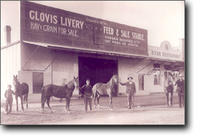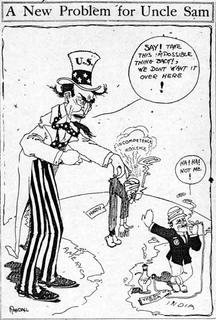Coming Home to Clovis
 This weekend, we are in Clovis, my hometown near Fresno in California’s Central Valley. My grandfather Kehar Singh came here from Punjab, India in 1913 and farmed for decades. My father was born on this land. And so was I. My family’s house is still built on the corner of the old farmland. But it looks very different now. What used to be vast farmland and orchards has now been turned into suburbs and strip malls. In just the past year, my grandfather’s land has been sold and paved over; it now looks like any other suburb in America. (The picture shows Matt shooting one of the few fields that are left.)
This weekend, we are in Clovis, my hometown near Fresno in California’s Central Valley. My grandfather Kehar Singh came here from Punjab, India in 1913 and farmed for decades. My father was born on this land. And so was I. My family’s house is still built on the corner of the old farmland. But it looks very different now. What used to be vast farmland and orchards has now been turned into suburbs and strip malls. In just the past year, my grandfather’s land has been sold and paved over; it now looks like any other suburb in America. (The picture shows Matt shooting one of the few fields that are left.)
We are here because in our documentary, we wish to tell the story about how communities targeted after 9/11 have been part of the fabric of this country for over one hundred years. The first pioneers to come from India were Punjabi Sikh farmers. My grandfather was one of them. Since my family history tells the story of Sikhs in America, we decided to film my family, the land, and my hometown.
 When we arrived home, my parents (Judge and Dolly, below) recieved us, and my mom gave us a bouquet of flowers to celebrate our final stage of production.
When we arrived home, my parents (Judge and Dolly, below) recieved us, and my mom gave us a bouquet of flowers to celebrate our final stage of production.  My mom and Kathy, our family friend (below right), fed the entire crew for the whole weekend on our insane schedules. We had lunches at 4pm and dinners at midnight, complete with homemade banana splits. Don officially adopted my mom as his Auntie.
My mom and Kathy, our family friend (below right), fed the entire crew for the whole weekend on our insane schedules. We had lunches at 4pm and dinners at midnight, complete with homemade banana splits. Don officially adopted my mom as his Auntie.

Kathy probed, “Why did you give Valarie so much freedom?”
My mom laughed, “I think I wanted her to do all the things I was never able to do in India. I wanted her to be free.”
I am astounded by my parents. They have let me pursue every crazy scheme that has ever entered my head. From manufacturing a hydroponic garden in my backyard for Science Fair, to producing dramas about India’s Partition for History Day, to making this film.
After settling in, we ventured into town. Our first visit was Old Town Clovis, where the crew shot our local Farmer’s Market and the historic “Clovis: Gateway to the Sierras” sign. While the crew was getting the shots, I wandered into the Clovis “Dry Creek” Museum. It was the first time in the museum for years.
 There were pictures of Clovis Cole, the first man who gave the land to buid the downtown. And the first ranchers. And then the railroad. And the Clovis flume, where they brought lumber down from the mountains. There were mostly white faces on the walls. And I thought about my grandfather.
There were pictures of Clovis Cole, the first man who gave the land to buid the downtown. And the first ranchers. And then the railroad. And the Clovis flume, where they brought lumber down from the mountains. There were mostly white faces on the walls. And I thought about my grandfather.
There was a woman sitting behind the table. “You from out of town?”
 “No, I grew up here. My grandfather came here a long time ago.”
“No, I grew up here. My grandfather came here a long time ago.”
“Oh, you’re Kehar’s grandaughter!” she exclaimed.
I was shocked. “You knew my grandfather?”
“Knew him? Of course I knew him. Everyone around here knew him. He was the kindest man. Very honest and hard-working. Everyone respected him.”
She then pulled out a book about early Clovis and turned to a whole page about my grandfather and his life as an early immigrant farmer in Clovis. I was very moved. And somehow proud. I was only seven when my grandfather died at 94 years old, and so any stories I can snatch up about him are precious. She gave the book to me as a gift.
The next day, I brought old photos and documents that belonged to my grandfather so that she could include them in the museum. Here is a photograph of one of the first Sikh temples in America, the Stockton gurdwara, where my grandfather and his brother are standing on the right stair:

We decided to interview the woman at the museum about early Clovis. It turns out that she was Peg Bos, the first woman mayor of Clovis, and she had plenty of stories. She described the many immigrant families who settled in Clovis and farmed together: Italians, Germans, French, Portugese, Japanese, and Punjabis, my grandfather and his brother. In this small town where everyone knew each other, the farmers respected one another.
 But there was also discrimination against the early Punjabi farmers, whom the newspapers called “Hindoos.” Here is a cartoon called “A New Problem for Uncle Sam” from 1910. It is easy to forget the long pattern of exclusion toward new Americans.
But there was also discrimination against the early Punjabi farmers, whom the newspapers called “Hindoos.” Here is a cartoon called “A New Problem for Uncle Sam” from 1910. It is easy to forget the long pattern of exclusion toward new Americans.
Peg Bos went on to talk about the Japanese Internment, and how she went to the railroad station to serve the Japanese Americans lemonade in the heat while they were rounded onto trains and sent to the camps. My grandfather looked over their farms while they were gone and visited them in the camps in Arizona. It is ironic to think that it is now my grandfather’s descendents who need the friendship of other communities in the face of hate and discrimination.
 Peg finally talked about the “Clovis Way of Life“ disappearing because of all the new housing and shopping developments. So we tra
Peg finally talked about the “Clovis Way of Life“ disappearing because of all the new housing and shopping developments. So we tra
veled around Clovis, filming parts of the town that captured  its changing character. My friend from high school, Sharon Rye, joined me. We really hadn’t spent any time together since graduating from high school six years ago, so this was a nice way to reconnect. She became our official Clovis scout, recommending places to film. We filmed the fields and the cows and the new houses and shopping centers that were replacing them. We filmed the large church complexes and the red, white, and blue barn that Sharon found for us off of Highway 41 on the way to Yosemite (in the picture). This is the kind of thing you see in my hometown.
its changing character. My friend from high school, Sharon Rye, joined me. We really hadn’t spent any time together since graduating from high school six years ago, so this was a nice way to reconnect. She became our official Clovis scout, recommending places to film. We filmed the fields and the cows and the new houses and shopping centers that were replacing them. We filmed the large church complexes and the red, white, and blue barn that Sharon found for us off of Highway 41 on the way to Yosemite (in the picture). This is the kind of thing you see in my hometown.
After we documented the history of Kehar Singh, my father’s father, we sat down with my Papa Ji, my mother’s father Captain Gurdial Singh Gill, now 84. Papa Ji has been my pillar of wisdom since I was very small.
Here I am telling Papa Ji about the questions I am going to ask him for our interview:

Nighttime in Clovis, when it cooled down to a livable temperature, we worked in the garage, which we turned into a studio in order to film objects against a black backdrop. In the film, we wish to introduce the Sikh religion. But instead of getting images from somewhere else, we decided to create original footage.
 This meant filming the five articles of Sikh faith, the 5 K’s, ourselves. As well as the Guru Granth Sahib, the Sikh Holy Book. The Fresno Sikh gurdwara (house of worship) on Dakota Street let us borrow some items
This meant filming the five articles of Sikh faith, the 5 K’s, ourselves. As well as the Guru Granth Sahib, the Sikh Holy Book. The Fresno Sikh gurdwara (house of worship) on Dakota Street let us borrow some items  when we stopped
when we stopped
by to film Sikhs sharing langar (the free meal provided by Sikhs in the spirit of service).
It took a very long time to prepare every shot in the studio. Matt, our cinematographer, and Don, first camera, worked for hours late into the night, adjusting the lighting, creating the shot, and filming the right angle. Here are shots of the kara, a steel bracelet, (top) and long safron cloth which many Sikhs wrap around their long hair as a turban (bottom).
In the end, we captured excellent original footage for a documentary that will have many layers of story found in my hometown alone. And we’ve only just begun.
Special thanks to Sharon Rye, our Clovis scout extraordinaire, and to Justin Richardson, for braving the Central Valley heat to record the sound for all our Clovis interviews– and still laughing at our terrible jokes:


